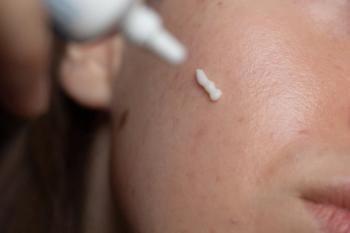
Space Science is Revolutionizing Cancer Research
Key Takeaways
- Microgravity and cosmic radiation impact cancer cell behavior, tumor microenvironment, and immune responses, altering cancer progression and treatment resistance.
- Space environments reduce cancer cell proliferation, disrupt cytoskeletal organization, and affect angiogenesis, with implications for tumorigenesis.
New research explores how microgravity and cosmic radiation influence cancer cell behavior, immune responses, and potential advancements in oncology treatments.
Microgravity and cosmic radiation may play a key role in the behavior of cancer cells, interactions within the tumor microenvironment, and immune responses, according to a new study.1
The study, published in the journal Trends in Cancer, examined the potential role of the space environment and space research in revolutionizing care for patients with various cancers, including melanomas.
Background and Methods
To understand how cancer progresses, evades the immune system, and resists treatment, researchers are increasingly turning to environments that stress the body in unusual ways. The space environment, particularly microgravity and high-energy radiation, alters fundamental physiological processes. Spaceflight leads to well-documented changes such as fluid redistribution, immune dysregulation, and muscle atrophy.2
Researchers conducted a review accumulating data from spaceflight missions, ground-based microgravity analogs, and in vitro studies using rotating wall vessel bioreactors and clinostats to simulate space conditions. The authors focused on how microgravity influences components of the tumor microenvironment, including immune responses, endothelial behavior, extracellular matrix dynamics, cancer stemness, and how radiation-induced DNA damage insights can aid cancer diagnostics.
Findings
Researchers found that microgravity affects cancer cells across multiple domains. Cell proliferation and viability decrease with exposure duration, likely due to disrupted cell cycle progression and increased apoptosis. In melanoma, leukemia, and colorectal cancer models, weightlessness led to reduced colony-forming ability, diminished growth, and heightened chemosensitivity.3
They also noted that at the cellular level, the gravitational shift disrupts: cytoskeletal organization, cell-cell adhesion, and extracellular matrix interactions. These structural shifts can either impair or promote tumorigenesis depending on the cancer type and exposure duration.
Furthermore, microgravity exerts an effect on angiogenesis, with some proangiogenic genes being upregulated. Key vascular growth factors like VEGF may be downregulated, suggesting the possibility of impaired blood vessel formation.
Spaceflight alters the human microbiome, increasing the Firmicutes-to-Bacteroidetes ratio and changing metabolite output. These shifts, compounded by immune dysregulation, may influence carcinogenesis, according to review authors.
Additionally, the ionizing radiation found in space, composed of galactic cosmic rays and solar particles, poses a major hazard for astronauts and a rich field of study for cancer researchers. This high-energy radiation induces DNA double-strand breaks, chromosomal aberrations, and oxidative stress. It also compromises DNA repair pathways, leading to genomic instability, and triggers persistent inflammation.
Beyond biology, space medicine has yielded technical innovations with direct oncology applications. Telemedicine systems used for astronaut care have improved remote cancer monitoring and rural health care delivery.4 Miniaturized imaging tools and robotic surgical platforms, originally designed for zero-gravity operation, are now enhancing precision in tumor resections and biopsies.
Conclusions
While the potential of space-based research in oncology is clear, several limitations remain, including limited access to in-flight studies, the complexity of radiation exposure, and variations in tumor-type specificity.
Still, the review’s authors advocate for greater investment in space-oncology partnerships. They suggest that ground-based analog models should be refined to mimic space conditions more accurately and that multi-omics studies could further shape how gravitational and radiation stress defines tumor biology.
"We advocate for a proactive approach to integrating space innovations into cancer research and treatment, urging the global health community to harness these advancements to drive meaningful improvements in oncology," wrote review authors Akbarialiabad et al.
References
- Akbarialiabad H, Jamshidi P, Aminzade Z, et al. Leveraging space innovations for cancer breakthroughs on Earth. Trends Cancer. 2025;11(5):433-440.
doi:10.1016/j.trecan.2025.02.003 - Tomsia M, Cieśla J, Śmieszek J, et al. Long-term space missions' effects on the human organism: what we do know and what requires further research. Front Physiol. 2024;15:1284644. Published 2024 Feb 13.
doi:10.3389/fphys.2024.1284644 - Topal U, Zamur C. Microgravity, stem cells, and cancer: a new hope for cancer treatment. Stem Cells Int. 2021;2021:5566872. Published 2021 Apr 29.
doi:10.1155/2021/5566872 - Cinelli I, Russomano T. Advances in space medicine applied to pandemics on earth. Space Sci Technol. 2021;2021:9821480.
Newsletter
Like what you’re reading? Subscribe to Dermatology Times for weekly updates on therapies, innovations, and real-world practice tips.


















